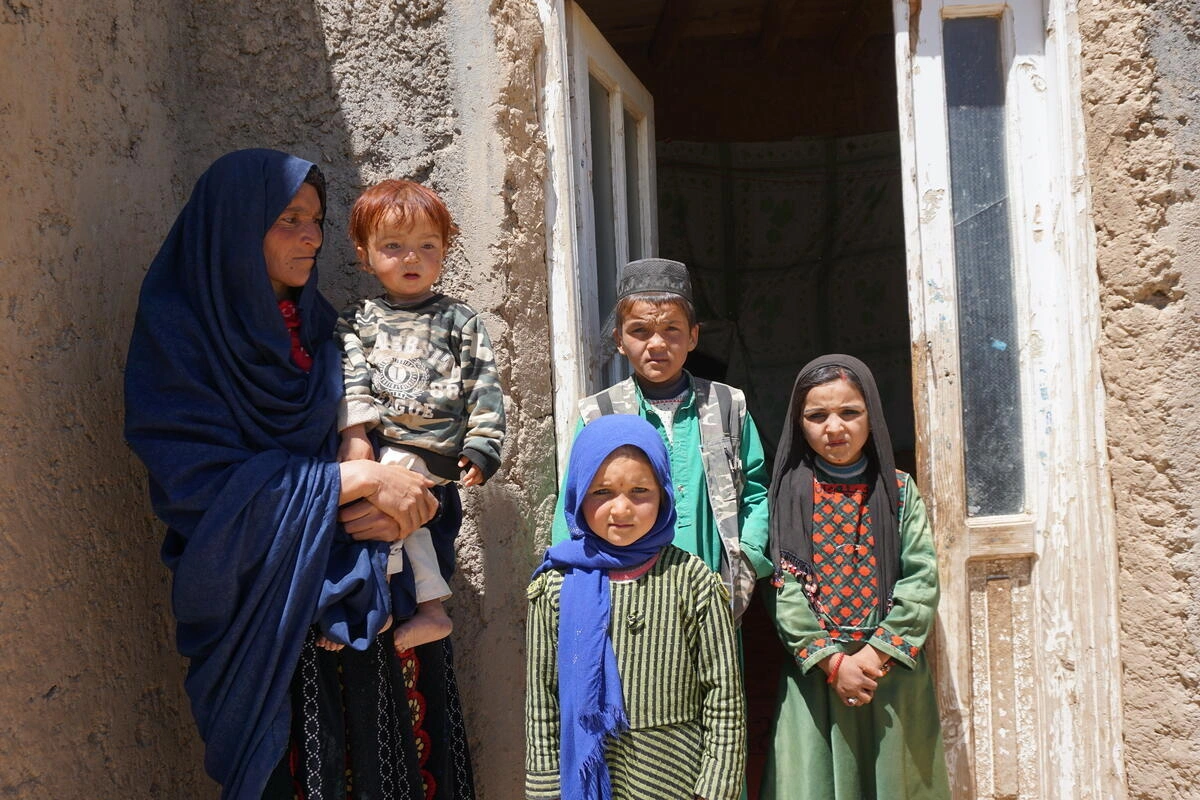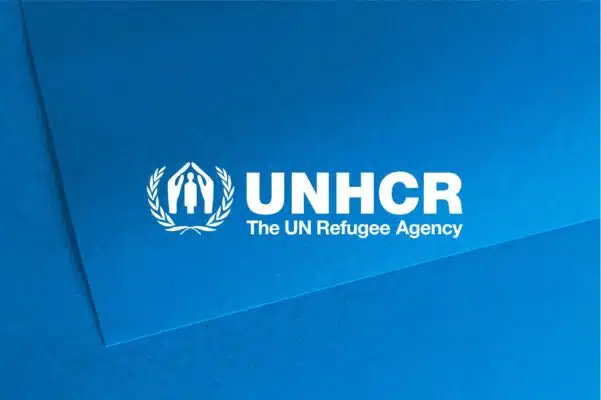
Farzana and her 2-year-old daughter Arefa outside their partially collapsed home in Jar-e-Saifor village, Ghor province. © UNHCR/Caroline Gluck
Last month’s catastrophic flash flooding in Afghanistan left thousands of families displaced and their homes and livelihoods in ruins. Now they need support to recover and rebuild.
By Caroline Gluck in Ghor province, Afghanistan
“This was a disaster in which everyone suffered,” said mother-of-five Said Khanim outside her damaged home in Dara-e Shaikha village in Afghanistan’s western Ghor province.
Exhausted and stressed, she tries to calm her restless toddler, Enamulla, as she surveys the havoc caused by flash floods that tore through the village in mid-May.
When a torrent of water smashed through the doors and windows of her house, quickly rising to more than a metre, Said Khanim and her children ran for the safety of higher ground. But in the chaos, her four-year-old daughter Atifa was separated from them. Villagers found the girl’s tiny body a few hours later, washed into a culvert.
Catastrophic flash flooding and heavy rains last month killed at least 347 people, leaving more than 10,000 homes destroyed or damaged, displacing thousands of families and damaging agricultural land and public infrastructure, including roads and bridges, health facilities, water and sanitation infrastructure and schools. Since then, UNHCR, the UN Refugee Agency, and other humanitarian organizations have been providing essential aid, including emergency shelter, food and medical care, to help communities such as Said Khanim’s to recover.
Her family is now staying with neighbours, afraid to return home and fearful that deep cracks left in the walls have weakened the structure and could trigger another tragedy. But the damage is not just physical: Said Khanim’s surviving children have nightmares and often wake up shouting. Making things harder still Said Khanim is dealing with all of this alone because her husband had travelled to look for work.
“I’m very concerned about the future.”

Said Khanim stands outside her flood-damaged home with her four surviving children after her daughter Atifa, 4, drowned. © UNHCR/Caroline Gluck
“We don’t have anything: no fuel for cooking, no food, nothing. We get some things from the neighbours but depend on tea and bread. We are deep in debt,” she said. “We’re living in great difficulty, without everything we had. I’m very concerned about the future.”
Floods deepen vulnerabilities
No one escaped unscathed from the floods, which residents describe as unprecedented. “I can’t remember anything like this in my lifetime,” said 80-year-old Abdul Raouf, attending a psychosocial counselling session organized by UNHCR partners. Abdul Raouf’s house collapsed in the flash floods, his belongings washed away, and his crops were destroyed. “We are looking for humanitarian attention and support. We need a lot of help,” he said.
Even before the floods, residents of Ghor province faced difficulties accessing food, and basic services. Located at the southwestern end of the Hindu Kush mountains, 2,500 above sea level, with unpaved roads and poor infrastructure, the region contends with drought in the summer and heavy snowfall in winter.
“I can’t remember anything like this in my lifetime.”

80-year-old Abdul Raouf attends a counselling session organized by UNHCR after his home and crops were destroyed. © UNHCR/Caroline Gluck
The flash floods have deepened people’s vulnerabilities, leaving them with limited means of coping. “Many people are traumatized because of the floods and others are facing financial uncertainty,” said Parigul Habibi, a psychosocial support worker with UNHCR partner WASSA (Women’s Activities and Social Services Association), who has been offering counselling sessions as part of a mobile response team providing a range of protection services. The team includes UNHCR-trained Community Outreach Volunteers (COVs) who talk to people affected by the floods and ensure their needs and concerns are known and relayed to humanitarian organizations.
“The flood has affected people both mentally and physically,” said Parigul. “I met several women who suffered miscarriages because of the fear and anxiety after the floods.”
“The flood has affected people both mentally and physically,” said Parigul. “I met several women who suffered miscarriages because of the fear and anxiety after the floods.”
Children suffer too
Children are among the worst affected, with parents reporting their youngsters being unable to sleep, suffering nightmares and bedwetting, and exhibiting uncharacteristic, extreme emotions since the floods, such as shouting and crying.
“My son is very traumatized and my daughter has fever and diarrhoea,” said Abdul Basir, a labourer, in Jar-e-Saifor village. “My son yells and wants to stay near me all the time. He is always holding my hand.”
Children in Dara-e Shaikha village used to study in tents, but now attend class outdoors and exposed to the elements after they were destroyed in the floods. Nevertheless, teacher Abdul Wahid Samadi is determined to continue classes as long as he can, providing some routine and structure for pupils suffering in the aftermath of the flooding.
“We can use this place for a few days, and we want to continue their education, but students are getting sick,” he said. “Some have diarrhoea or sore throats. We need agencies to help us with somewhere to study.” Abdul Wahid added that already several families had moved away from the area in search of a new start after losing everything.

Children in Gul Dar-e-Shaikha village attend classes outside after the tents where they used to study were destroyed. © UNHCR/Caroline Gluck
With so many households losing what little they had – their homes, but also their sources of income such as crops and fruit trees, shops, motorbikes, and other assets – rebuilding will be hard.
Gulbuddin Amiri, a displaced Afghan and father of six, now living in Dahan-e-Kandiwal village, lost his small charcoal stall in the local bazaar in the floods, while his remaining stock, stored at home, was also damaged, left coated in mud and unsellable.
“I have nothing now,” Gulbuddin said, outside his ruined, mud-covered rented home. “We don’t have enough food, and we don’t have shelter,” he said. In his arms, he held his four-year-old son, Sadridin, who had just come back from hospital, suffering from flu. “We need everything,” he said. “We are hungry and need help to return to our normal lives again.”
Originally published by UNHCR 14 June 2024.





